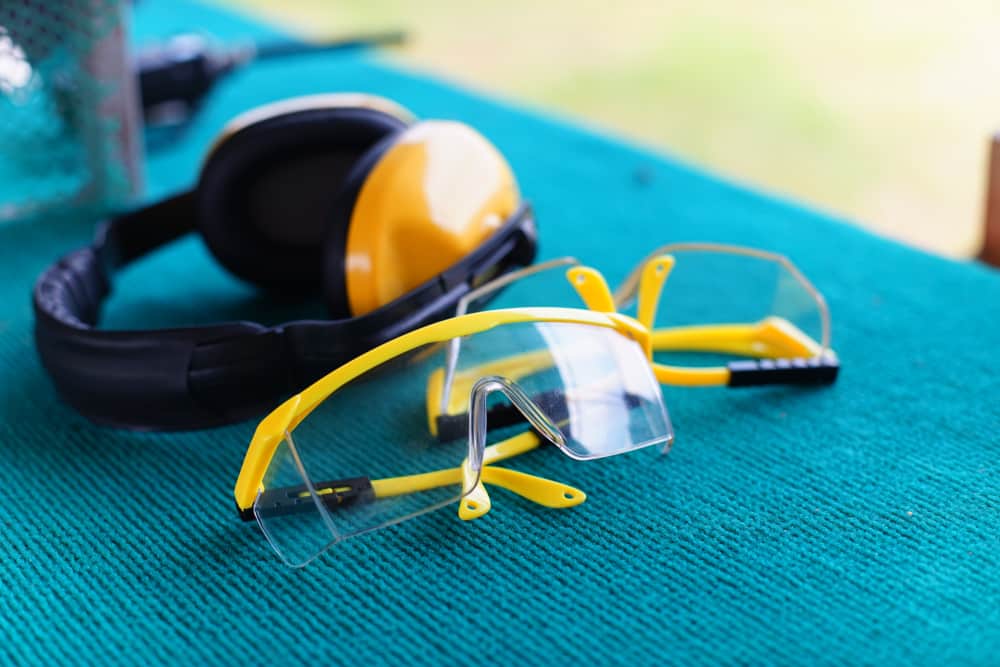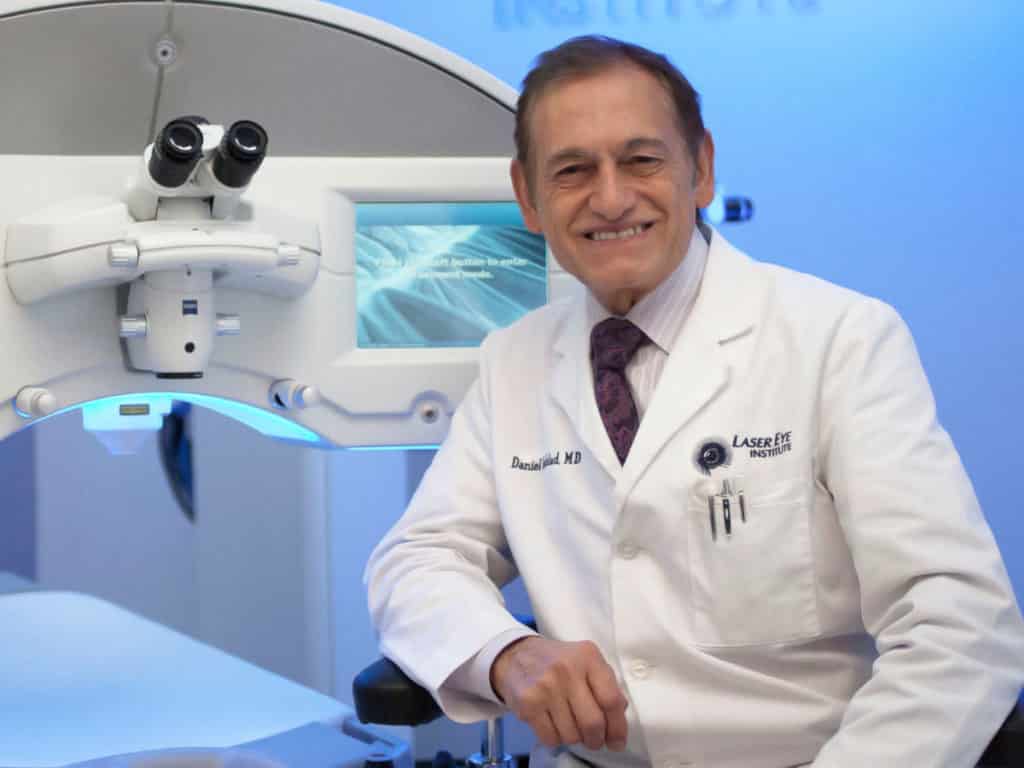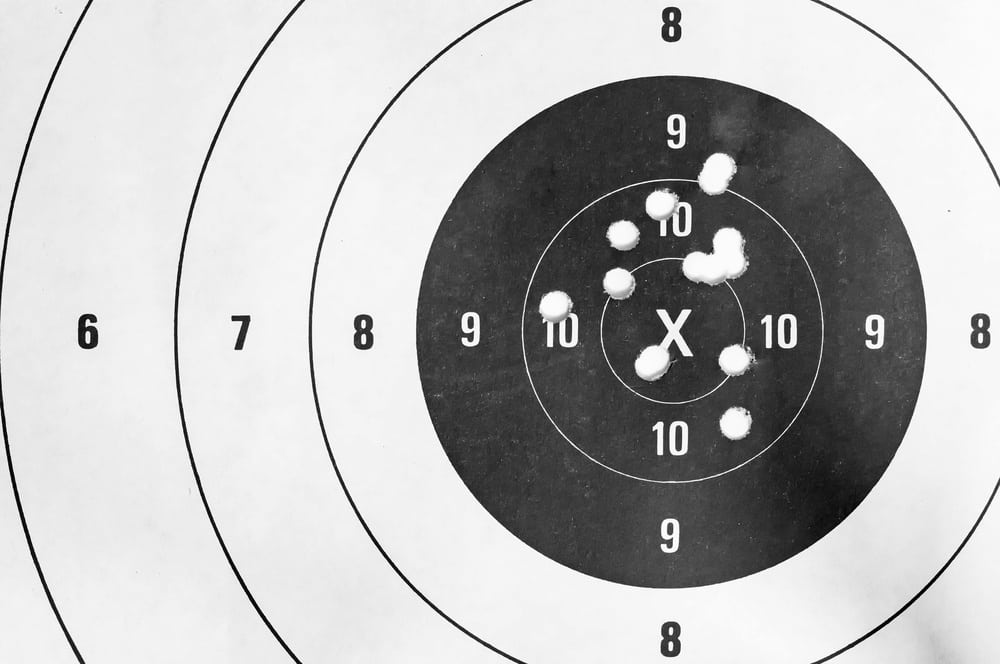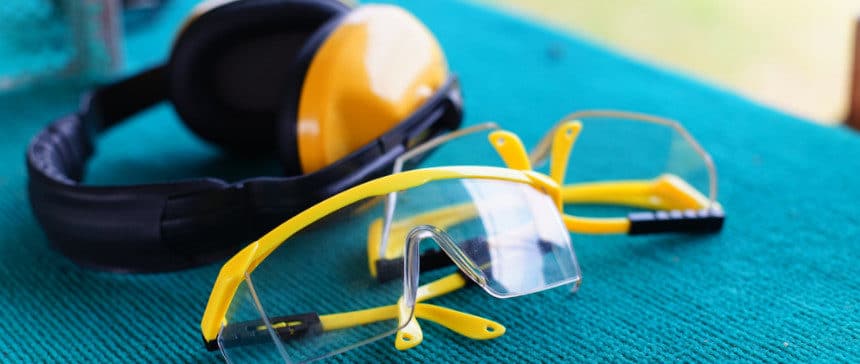A Sharpshooter’s Journey To Laser Vision Correction
Prior to age forty years old and four months, I had 20/10 vision in both eyes with a strong right eye dominance. Then all the sudden it seemed like someone had flipped a switch, four months after my 40th birthday. I went from being able to clearly see the ridges on a target at a significant distance, to only seeing an orange blur traversing through an undefined trajectory. Much to my dismay, it was time for an expedited eye exam with the foregone conclusion that I needed correction. So begins the six-year journey from glasses to laser vision correction.
I Only Wear Sport Glasses!
My disdain for wearing corrective glasses runs quite deep, so contacts were the way I planned to go. The greatest challenge was the astigmatism in the right eye. This defect in the eye, likely caused by age, made it so that the shape of the cornea was no longer perfectly spherical. In order to apply a contact to an eye with an astigmatism, the contact must be weighted so that it orients to the proper position naturally. These contacts are commonly known as Toric lenses. Although apprehensive, I ordered contacts and decided I would try prescription shooting glasses as another option.
My adventure with prescription shooting glasses included not only a style with lenses, but also prescription inserts in my other frames. These are great options for some people because everyone’s eye and expectation of vision quality is different. In my case, the contacts combined with standard shooting glasses became my first choice. The problem I had with Toric contacts was that occasionally the lens would rotate, right before I was about to call for a target. This presented multiple problems. One, I would try to blink rapidly in order to get the contact to move back to its proper position and into focus which negatively impacted my thought process. Second, with this interruption to my pre-shot routine, I often rushed to the call for the target leading to my hold point sometimes being altered from my initial set-up. I had just about made peace with the fact that I was simply going to have to chock it up to getting older when a co-worker decided to check into laser eye correction surgery. His results were outstanding. He claimed his vision was better than he could remember at any time in his youth, and getting better by the day post-op.

Apprehension
I had some major questions considering I shoot competitively and need clear vision at distance, but I also spend a lot of time on the computer for my day job and writing for various publications. I did some research on the facility where my co-worker had his procedure done and was impressed with the experience of the doctors and staff. Although I had been told many times that I likely did not qualify for laser correction, I elected to make an appointment for a consultation which was free of charge, so what did I have to lose? The protocol for the Laser Eye Institute in Troy, Michigan was to send your information through their website and wait for a call to schedule. I was shocked when my phone rang about ten minutes after I sent the info. The scheduler was helpful and answered my initial questions. She proceeded to make me an appointment to check things out and see if this was a solution that could work for me.
Dr. Daniel Haddad M.D. and Dr. Jeffery Rautio O.D.
I did extensive research on the doctors at the Laser Eye Institute. I was impressed to read about Dr. Daniel Haddad’s experience and pioneering contributions to the field. Dr. Haddad founded the Laser Eye Institute in 1987 and has been serving patients in the metro Detroit area since. He developed a custom RK procedure in the 1990’s, has worked on the improvement of eye tracking technology used in modern lasers and provides continuing education programs for multiple national and international institutions which educate currently practicing surgeons and students. Dr. Haddad has traveled the world lecturing surgeons, has instructed at Wayne State University and has even been on the cover of Ophthalmology Times Magazine.
Dr. Rautio has an equally impressive background and pedigree in the field of Ophthalmology and would be responsible for my pre and post-surgical care. Having spent three decades providing eye care to patients, with the last twenty exclusively treating pre and post-operative care for patients of LASEK, LASIK, SMILE and cataract surgery, it seemed he would have the expertise to make sure my results would be the best possible. Rautio was appointed the team Optometrist for the Detroit Lions in 1991 and held that position for nine years, providing care to players, coaches and staff. Dr. Rautio has also traveled to lecture and provide instruction to other eyecare professionals and has authored and published several professional papers. With all the above considered, I figured these two doctors could be trusted with my eyes.

Consultation and Penance
Arriving on time, I was brought into what I figured would be a standard eye exam like I’ve had many times before. That was not the case. The staff and doctors spent about two and a half hours with me, conducting multiple tests (I believe seven or eight). The purpose of these tests was to determine several things about my eyes ranging from correction needed to dryness. Inquiring as to the purpose of all these tests Dr. Haddad responded: “the truth is I value very much that patients who are putting the most precious sense in my hands, that’s why I have also strived to give my patients the best technology, not only in terms of the Lasers, but also the diagnostic devices to help me screen patients who may not be good candidates. I’d rather say no to someone as opposed to proceeding with treatment and have the patient encounter subsequent complications. Unfortunately, some doctors have become “LASIK Merchants” advertising $250 LASIK, baiting and switching, and not seeing the patient until the day of the procedure. After this thorough battery of examinations, Dr. Haddad advised me that I was a good candidate. He discussed a couple of options for me.
First, we could correct both eyes for distance, but I would need reading glasses in perpetuity for close vision. The other option was “mono-vision” correction. With this approach the dominant eye (my right) was corrected for long distance while the non-dominant eye was corrected for closer reading distances. I clearly articulated my concerns with having only one eye corrected for distance and its impact to depth perception for shooting. Dr. Haddad explained that it likely would not be an issue. However, if it presented a problem for me, we could simply apply a contact to the non-dominant eye for shooting. With my disposition towards corrective lenses and considering my daily tasks, the mono-vision option seemed to hold the most efficacy for me.
There were a couple considerations with this correction process that made me comfortable that it would work for me. First, the astigmatism in my right eye would be corrected during the laser surgery. This would allow for light to pass through properly and not cause distorted refraction and consequently blurry objects or glare. Second, the non-dominant eye would be corrected to an extent that the disparity between the two eyes when it comes to distance was not so much as to cause peripheral problems such as headaches, or intense eye strain. As I have mentioned in previous articles, the brain sees…not the eyes. The brain can adapt to significant changes with great efficiency.
Even with a learning curve for my brain to adapt, I was optimistic that this would work. With a surgery date scheduled it seemed as though I still had to “pay the piper” for taking advantage of this advanced correction method that would free me from glasses and contacts. For two weeks prior to surgery the patient cannot wear contacts as they can temporarily alter the shape of the eye, creating the potential for issues with the surgery. They also can introduce bacteria into the eye which could negatively impact healing. Consequently, I was burdened with wearing two-year-old glasses for the two weeks prior. A small price to pay for the results I realized. The only other prerequisite was antibiotic and steroid eye drops for a week prior at certain intervals, in order to prepare the eyes for a successful outcome, free of infection and quick healing.
Surgery Day
The day of surgery was not a big deal at all. The staff at the Laser Eye Institute did a couple of preoperative tests to verify their plan. They gave me some meds to relax me and off we went to the surgical suite. The technique being used on my right eye is called SMILE (Small Incision Lenticule Extraction). To put things into lay terms, with this technique the laser makes the corrections through the lens and creates a lenticule (tiny disc shaped piece of corneal tissue). This lenticule is then removed through a small incision and the procedure is complete. This procedure has the benefits of having less of a chance for dry eye issues and a very quick healing time.
The left eye was treated with the LASIK procedure (Laser Assisted in Situ Keratomileusis). With this procedure a laser makes tiny bubbles within the top layer of the cornea allowing a flap to be lifted, leaving a hinge on one end of the outer section. This flap is then folded back providing access to the middle portion of the cornea where the laser reshapes the lens to correct vision. The flap is then replaced over the middle section of the cornea without the need for any mechanical fixation. The flap adheres naturally through the healing process.
Both procedures occurred quickly. I do not believe I was in the surgical suite for a total of thirty minutes. I had no pain and instantly could see better at completion of the procedure. The after care is important with these procedures in that, if not careful before complete healing, the flap from the LASIK procedure could become dislodged. It was for that reason that I had to sit in the back seat for the ride home and was clearly told not to rub the eye that had LASIK done. For a week after the surgery the patient is given plastic shields to apply before falling to sleep in order to make sure no inadvertent rubbing occurred during sleep. The funny story about post-op and the drive home evolved around the medication I was given to relax. Sitting in pre-op, I did not feel any effects of the meds, so I was administered an additional small dose. I really did not notice it until after the surgery and we stopped to get a burger on the way home. It was all I could do to finish my burger and then it was nighty night all the way home.
Once home, I walked straight into the bedroom and took a four hour nap, which is exactly what the doctors at Laser Eye Institute wanted post-op. Following up with the required eye drops as prescribed to make sure healing proceeded as expected was a priority but all in all, I have had teeth cleanings that were more involved from my end than this surgery. I had no pain and no issues to speak of. In fact, I had surgery on a Thursday and shot a round of sporting clays with my collegiate athletes on Sunday.
Results
Dr. Haddad, Dr. Ratio and their staff were clear that initially there could be some glare for a period after the surgery. This was evident at the above-mentioned clay outing. I had an incoming 60mm, with full sun hitting the dome. The glare on this target made it appear to glow brightly. I switched to a darker lens to cut the glare on subsequent targets with reasonable success. The folks at Laser Eye Institute advised me that this glare will slowly dissipate as healing proceeds. I am currently three weeks out of surgery and have already noticed marked improvement from that first clay outing.
In terms of the mono-vision; I currently do not see this as an impediment to my transition from soft to hard focus on targets. I will probably have the contacts on hand in the event I feel a need for them in my left eye. Having shot sporting, skeet and trap thus far I see no need to use them. During the first couple weeks I was closely monitoring stimuli from driving for feedback on any potential impact to depth perception based on the mono-vision. I clearly recognize depth at what I believe is the same level I did previously with my eyes corrected by contacts. Besides keeping eye moistening drops handy I see no real difference in the quality of my pre-age forty vision and what I have now after laser eye surgery.

Summing It Up
I have spoken to several friends prior to having this surgery done and found that many find the thought of such a procedure frightening. I can unequivocally state that there is no reason to fear this type of vision correction. One factor that gave me additional confidence in Dr. Haddad and Dr. Rautio was their policy of standing behind their work by including two years of follow-up appointments with the cost of the surgery. Waking up in the morning and being able to instantly see clearly without any need for glasses or contacts is truly priceless for this 46 year-old shooter. Do your research, find the best provider in your area and schedule a consultation. If you are within striking distance of the metro Detroit area and want the best of the best, contact Dr. Haddad at Laser Eye Institute. I can’t say enough about their professionalism and the amount of time they spent explaining the process and considerations to me.
Editor’s note: Matthew Gay is a shooting instructor from Michigan, the Head Coach of the Olivet College Clay Target Team, Vice President of the Michigan Scholastic Clay Target Program Board of Directors, a bunker trap junkie and Master Class Sporting Clays competitor.
Share This Article
Posted by Dave Lemieux
David Lemieux, BA from Oakland University is a LASIK expert and marketing professional that has worked with Dr. Dan Haddad and the Laser Eye Institute since 2017. David believes in education and cutting through the noise to deliver facts and opinions about LASIK, SMILE, and all things Laser Vision Correction.
